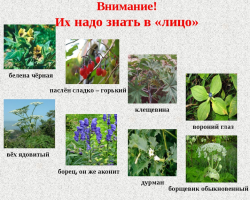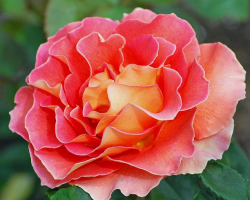The timing of the harvest of onions in the middle lane and Siberia.
Content
- When to dig a bow planted in the winter?
- When to dig a bow planted in the spring?
- When to remove onions: signs of maturation
- When a onion is removed for the winter, after a rainy summer?
- How can you dig a bow if it is not ripe?
- When they remove onions from the beds: the timing
- How to collect a bow for storage?
- When to dig a bow in Siberia?
- How to understand that onions have ripened?
- When to dig a bow along the lunar calendar?
- When to remove onions: reviews
- Video: when to collect onions?
Onions are a long -term vegetable culture, which is a favorite among foods used in cooking. In this article we will tell you when it is necessary to remove onions from the bed.
When to dig a bow planted in the winter?
It would seem that this is a fairly simple question, and an experienced gardener can determine the harvest period without difficulty. However, in fact, this is not so, because climatic conditions, the weather in a specific period of time, as well as the onion variety, and the terms of landing, significantly affect the timing of the collection.
When to dig a bow planted in the winter:
- A bow that was planted in the winter, that is, a winter culture, is removed 2 months earlier than the one that was planted in the spring.
- On average, the onion of the onion, which was planted in the spring, is 70 days, it is about two and a half months.

When to dig a bow planted in the spring?
The culture that was planted in early May can be collected in late July.
When to dig a bow planted in the spring:
- However, this rule works only in the middle lane of Russia, the Moscow Region. If these are regions with a more severe climate, rainy and cold summer, late spring, then you will have to collect culture much later.
- On average, harvesting is carried out within the end of July until the beginning of September. In the northern regions and Siberia, harvesting is possible even at the beginning of September. However, it is worth focusing not only on the terms of landing, but also the appearance of the culture.

When to remove onions: signs of maturation
There are several signs that will help to determine that the harvest time has come. The readiness of onions for collecting can be judged by the following signs.
When to remove onions, signs of ripening:
- Green feathers leaned toward the ground, turn yellow and begin to dry.
- The neck was exposed, and became dry.
- The upper part of the onion head is visible.
If you saw that this is happening with a garden culture, you can start harvesting. There are a lot of subtleties that do not allow harvesting immediately after its maturation. In particular, this is a deterioration in weather conditions. It is believed that harvesting is best on a dry and sunny day, before which there were no precipitation for 3-5 days. It is worth harvesting when the earth is completely dry. This simplifies the process of digging up culture, improvesheading Luke.

When a onion is removed for the winter, after a rainy summer?
What to do if the summer is rainy, and the bow matures for a very long time? There are several tricks to which gardeners resort to. To speed up the maturation process, you canand 10-14 days before the estimated harvesting date, completely stop watering.
When the onion is removed for the winter, after the rainy summer:
- In the northern regions, in order to accelerate the ripening of the crop, it is dug up a little in a few days. For these purposes, they use pitchfork, while exposing 1/3 of the bulbs. It is necessary that the neck, feathers, as well as the third part of the head towards the soil level.
- All beneficial substances go into the bulb, and green feathers begin to fade, yellow and stretch to the ground. This allows you to accelerate the ripening time, and simplifies the task in the northern regions, which are characterized by rainy, cloud in summer with a small number of sunny days.
- Some gardeners recommend undermining the roots using the pitchfork, but they do not completely extract the heads from the ground, but leave until green feathers dry.

How can you dig a bow if it is not ripe?
If the summer is cold, rainy, you used all the tips to accelerate the ripening of the crop, but this did not give results, you need to dig onions with green feathers, but in no case breaking them.
How can you dig a bow if it is not ripe:
- It is necessary to gently remove the bulbs from the soil, while maintaining feathers.
- They need to be put on a dry fabric under a canopy, and left so that the upper part is dried up for about 5-7 days.
- As soon as the feathers dried, you can cut them and engage in the preparation of onions for storage for the winter.

When they remove onions from the beds: the timing
The term of harvesting depends on weather conditions and the amount of precipitation in the summer. It is necessary to focus on the condition of the onion neck.
When the onions are removed from the beds, the timing
- Typically, harvesting is carried out before the first frosts, in the late summer or at the very beginning of autumn. It is necessary to wait until the onion neck becomes dry. Pay attention if you are late with the extraction of a onion of the soil, it will begin to increase new roots, which will adversely affectheading vegetable.
- Thus, it will be quite difficult to save it until spring for re -landing. However, if you dig such bulbs ahead of time, they will dry out quickly or rot. Storing a sowing that was collected ahead of time is quite problematic. Accordingly, you can not get a good harvest next year.

How to collect a bow for storage?
A bow collected ahead of time, or vice versa, after additional roots have grown, is stored much worse. To maintain the crop as long as possible, you must correctly approach its collection.
How to collect onions for storage:
- Many gardeners were divided into opinions, some believe that it is necessary to pull out the heads, holding on feathers, while others are sure that for these purposes it is best to use pitchfork.
- It is not recommended to use a shovel so as not to inadvertently cut the head of the onion. Some gardeners beat the heads against each other to eliminate the soil layer. However, this is not recommended to do this, since the upper part of the bulb can be damaged, which will significantly reduce its shelf life. If feathers accidentally broke away from the soil during the extraction of onions, such a head must be used immediately when cooking. They are not stored for a long time.
- Recommended after harvesting leaves about 1-2 cm of roots, and 2/3 of the length of the pen. Only after the bow is completely dry, this will happen after 2-3 weeks, part of the stems and the pen is cut off. You need to leave about 7-15 cm.
- It all depends on how you are going to store onions. If it is supposed to weave onion heads into the braids, then they leave the tops of about 15 cm long. If the bulbs are stored in boxes or nets, then you need to leave about 5 cm. The onion, ready to storage, differs with husk, which is easily broken into pieces and has dry well and dry out well .

When to dig a bow in Siberia?
Siberia is a region in Russia with rather harsh climatic conditions. That is why the timing of the harvest of onions, as well as other vegetable crops, differ significantly, from those accepted in the middle lane.
Siberia is distinguished by some features of weather conditions:
- Spring with frequent frosts
- Changing weather, which is characterized by a strong wind
- Dry, very hot summer or vice versa, endlessrains
When to dig a bow in Siberia:
- Thanks to this, it is worth concluding that there are no single rules, as well as the terms of harvesting onions. It all depends on the specific year, as well as the weather that stood in the spring and summer. In Siberia, it is best to harvest at the very beginning of September or at the end of August, and depends on the selected variety. It is worth giving preference to early or mid -season varieties. Later, views may not have time to grow up enough, they will be unsuitable for storing in winter.
- The main condition for the onion to lie all winter is the formation of a dense, scaly film, as well as husks, which tightly envelops the heads. If you dig on the onion early, then the shell will be very thin, fragile and brittle, it will not be able to protect the head from the effects of rot, dampness, mold, drying.
- Most often, such a bow is not stored for long, it is recommended to use it immediately. That is why it is necessary to choose varieties that ripen quite early and form a dense shell and scales. Huge influence onheading It has the right harvest. As for Siberia, it is necessary to harvest on a dry, sunny day.

How to understand that onions have ripened?
You can determine sleeping by several factors.
How to understand that onions have ripened:
- In time of landing. As indicated above, on average, from the moment of landing on the onion, to the collection of heads, it should take about 70 days. On average, the onion of the onion depends on its variety. Early varieties ripen much faster.
- Focus on the state of onions. If the tops are on the ground, dries or turns yellow, then the time has come to harvest. The neck should dry, become quite thin.
- Focus on the lunar calendar. Many gardeners use the lunar calendar to harvest.
- Take into account the amount of precipitation and weather conditions. If the summer is rainy, you may have to speed up the bulk ripening process.

When to dig a bow along the lunar calendar?
Experienced gardeners take into account not only the terms of growing up maturation, which are 70-85 days, but also the lunar calendar. There is an opinion that it is best to carry out work related to the growing moon, but this does not apply to onions, as well as such root crops as potatoes, carrots. The moon is influenced by the moon.
When to dig a bow along the lunar calendar:
- It is believed that the growing moon is closer to the ground, and decreasing further. That is why it is recommended to collect the fruits that are above the ground, or the pen on the growing moon, and the bulbs themselves - on the waning.
- On the growing moon, all the juices are in the part that is located above the ground, that is, in the transition or tops. During the waning moon, immediately after the full moon, on the contrary, the movement of juices and the saturation of the bulbs by nutrients is observed. That is why it is necessary to wait for the full moon, and to instill onions.
- However, if you saw that the bow has grown up, you should not wait for the waning moon so as not to spoil the crop. If the onion lies in the ground for a long time, it will be much more difficult to store in winter. Therefore, when determining the timing of the onion of the onion, it is necessary to apply an integrated approach: to evaluate the signs of readiness of the heads, to take into account the autonomic ripening timing, as well as the lunar calendar.

When to remove onions: reviews
It is very difficult to guess the weather and accurately determine the maturity of onions. Not always poor roying is associated with the wrong terms of harvesting.
When to remove onions, reviews:
Victoria. I do not have a garden, but I have a small plot near a private house. I grow parsley, as well as onions on it. This year I decided to plant ordinary onions. Focused on the condition of the green part. When the leaves began to fade, dry and yellow, dug onion. The heads of quite decent sizes, with dense husk. She was not going to store him for a long time, since there was little planting material. They ate only in a couple of months.
Miroslava. I have a large cottage on which I grow almost all vegetable crops, among them onions and garlic. For me, onions turned out to be one of the complex crops, since it could not guess the harvest with the time of gathering. In the year before last, she focused on the lunar calendar, as a result he did not lie down for long. I think that I overshadowed it in the ground, it is necessary to dig up much earlier. Last year, the bow was stored longer, as a dense film and several layers of dry husk formed. But the heads turned out to be small. I think it's a lack of top dressing. In general, the quality of the onion is satisfied, it was well stored in the grid on the balcony.
Olga. I have a large family, so Luke goes a lot over the winter. I start landing on a bow-gray in early spring. I harvest in early September, as I live in Siberia. Due to the rainy, cold summer, he does not always manage to fully mature. That is why I often accelerate the maturation process. I dig it on 1/3 with the help of a fork, leave to dry under a canopy, while I do not break off the tops. Only after the onion matures, cut the tops and spend the final processing, preparation for storage. Usually there are no problems. I am guided by the terms of landing, as well as weather conditions. Indeed, in Siberia, the weather is changeable, often a cold summer, and several days of heat.

Interesting articles about the cultivation and use of onions can be found on our website:
- Masks with onions from hair loss: 3 best recipe, tips
- Folk recipes with onions for cleaning blood vessels, with kidney stones, from headaches with hypertension, for vision and good sleep
- Folk recipes with onions with colds, influenza, bronchitis
- Onions for intestinal diseases, diabetes - application: folk recipes
- Growing greenery in an apartment on the windowsill all year round: Instructions
Gardeners claim that a culture collected on a rainy day is stored much worse. It is necessary to allocate another 7-10 days for complete drying under a canopy. This worsens the taste of onions, and also shortens the shelf life. That is why gardeners seek to dig a culture from dry soil on a sunny day.







